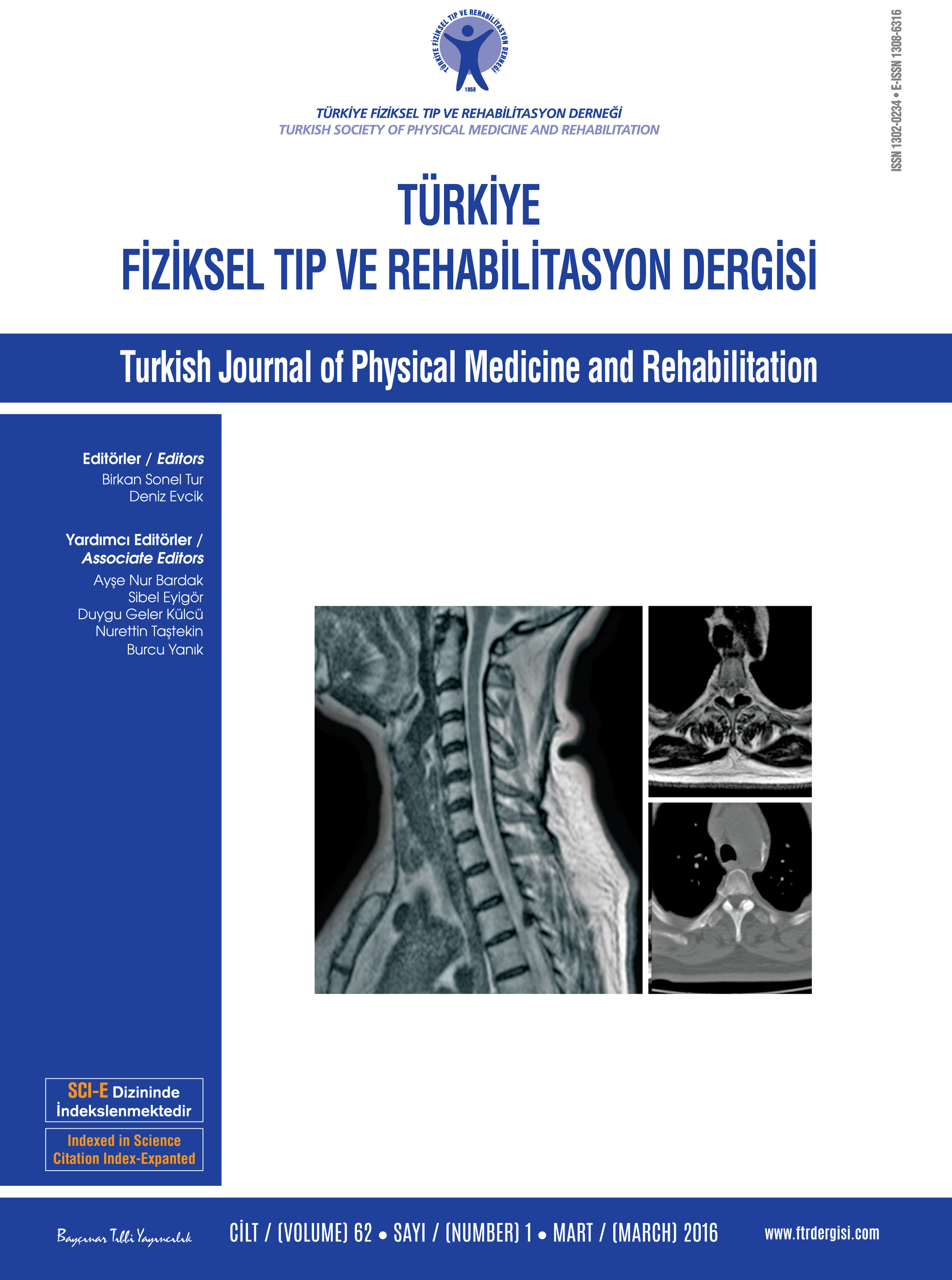Impact of fibromyalgia syndrome on quality of life in patients with Behçet’s disease
2 Department of Physical Medicine and Rehabilitation, Derince Training and Research Hospital, Kocaeli, Turkey
3 Department of Dermatology, Derince Training and Research Hospital, Kocaeli, Turkey
4 Department of Rheumatology, Derince Training and Research Hospital, Kocaeli, Turkey
5 Department of Ophthalmology Derince Training and Research Hospital, Kocaeli, Turkey DOI : 10.5606/tftrd.2016.81226 Objectives: In this study, we aimed to investigate the prevalence of fibromyalgia syndrome (FMS) among patients with Behçet’s disease (BD) and to assess the impact of FMS on quality of life in this patient population.
Patients and methods: Between September 2014 and December 2014 60 BD patients and 60 age- and sex-matched healthy controls were included in the study. The presence of FMS was evaluated based on the American College of Rheumatology (ACR) diagnostic criteria. The tender point count (TPC) scores were recorded. The disease severity of FMS was measured with the Fibromyalgia Impact Questionnaire (FIQ), while the disease activity of BD was determined by the Behçet Disease Current Activity Form (BDCAF). A Short Form 36 (SF-36) was used to assess the quality of life.
Results: According to the ACR criteria, the prevalence of FMS was 16.7% in BD patients and 3.3% in the controls, indicating significantly higher rates in the FMS group with BD [odds ratio (OR)= 5.8; confidence interval (CI) 95% (1.21-27.72)] (p=0.015), compared to the controls. Behçet’s disease patients with FMS scored significantly higher in headache, central nervous system involvement, patient’s and physician’s impression of disease activity subgroups of BDCAF, and significantly lower in all subgroups of SF-36 (p<0.05), compared to the those without FMS. The FIQ scores were positively correlated with the disease activity variables, except oral ulcers, while the FIQ scores were negatively correlated with the SF-36 subgroups (p<0.05). The TPC scores were positively correlated with the disease activity variables except oral and genital ulcers, skin lesions and pustules, while they were negatively correlated with the SF-36 subgroups (p<0.05).
Conclusion: Fibromyalgia syndrome is common among BD patients and is associated with higher disease activity and poorer quality of life. Diagnosis of concomitant FMS in BD patients may help us find more effective treatment strategies.
Keywords : Behçet disease; disease activity; fibromyalgia; quality of life
















